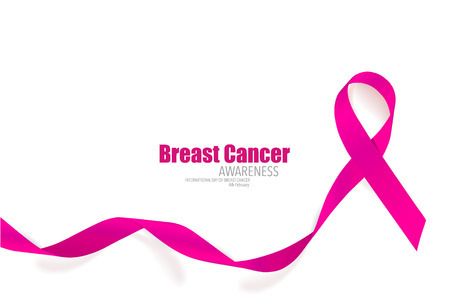
“October is Breast Cancer Awareness Month. Now is a good reminder to check in with your healthcare professional and make sure you are paying attention to your body.”
October is Breast Cancer Awareness month and a good reminder that early detection is key to prevention and successful treatments not only of breast cancer, but for many different diseases. It is an opportunity to mourn those that we have lost, celebrate those who are surviving and educate those who are unaware. It is important to know the statistics, understand how breast cancer detection and treatment has evolved, realize that men are also affected as well as understand resources available to learn more about it. Many people question when they should start screening and doctors give different opinions, so I hope to clarify early detection guidelines based on research and reputable cancer organizations.
The Numbers Are Real
The American Cancer Society estimates that almost 1.7 million new cases of cancer will be diagnosed in 2017. It is also estimated that about 252,710 new cases of invasive breast cancer will be diagnosed in women in 2017, which is about 30% of the new cancer cases in women (total new cancer cases in women is 852,630).
- Among females, breast (30%), lung (12%), and colorectal (8%) cancers are the most common
- 14% of cancer deaths in women in 2017 will be breast cancer (40,610 women).
- About 63,410 new cases of carcinoma in situ (CIS) will be diagnosed (CIS is non-invasive and is the earliest form of breast cancer).
- Women younger than 45 make up 2,320 deaths
- Ages 45 and older make up 38,290 deaths
- Younger than 65 make up 16,800 deaths
- 65 and older make up 23,810
Rates Went Down and Then Back Up Again
These numbers can seem scary, and should trigger you to make sure you are taking all precautions to get screened regularly and pay attention to your health, but it is not all bad news. According to the Susan G. Komen Breast Cancer Foundation, Breast Cancer mortality declined 38% in the U.S. from 1989 to 2014, showing great progress in screening and treatment. However, the American Cancer Society states that “Breast cancer incidence rates in females have been increasing very slightly over the last 10 years of available data (2004-2013), with the trend entirely driven by increasing rates among nonwhite women. This trend was preceded by a 7% decline from 2002 to 2003, which was primarily due to a reduction in use of hormone replacement therapy.” The National Institute of Health (NIH) also reported that in the U.S., most people diagnosed with breast cancer will live for many years. Today, there are more than 3.5 million breast cancer survivors in the U.S. (more than any other group of cancer survivors). However, we still have a long way to go!
Like many others, my family has had its battles with cancer. My mother, aunt and maternal grandfather all had forms of breast cancer that were detected early and treated mostly by mastectomy. The treatments were tough and life changing, but ultimately it saved their lives. In each of their cases, early detection allowed them to catch the cancer early enough in the process that they were able to fully remove it before it spread. Early detection as with many diseases is very important in evaluating your connection to breast cancer.
Men Can Also Get Breast Cancer
As you can see by my family’s battle with breast cancer, it is not limited to women only. American Cancer Society data shows that cancer incidence rates are higher in males than in females for each racial/ethnic population. The highest incidence rates are in blacks, among males, and in whites, among females. According to American Cancer Society data, for American males, the average lifetime risk of developing cancer is 40.8%, or a little less than one in two. These figures are based on the entire male population and vary for individuals because of lifestyle and other factors. (For example, cancer risk among smokers is higher than among nonsmokers.)
The American Cancer Society estimates about 2,470 new cases of invasive breast cancer will be diagnosed in men in 2017, and about 460 men will die from breast cancer. (Breast cancer is about 100 times less common among men than among women.) For men, the lifetime risk of getting breast cancer is about 1 in 1,000. The number of breast cancer cases in men relative to the population has been fairly stable over the last 30 years, and according to the Susan G. Komen Breast Cancer Foundation breast cancer in men accounts for about 1% of all breast cancer cases in the U.S. Prostate cancer is the most common cancer among males (19%), followed by lung (14%) and colorectal (9%) cancers. Because breast cancer is less common in men than women; often times men pay less attention to early detection guidelines and miss early screening. It is equally as important for men to continue to stay on top of screening as it is for women.
Six Helpful Resources for Screening and Early Detection
As noted above, early detection is key to better and more successful treatment. However, there are other opportunities to better understand issues surrounding breast cancer. Many women have questions about how early they should start being screened. There are many resources available to provide information, support, and services to help those with questions or who need extra help in the process. Given many doctors offer differing opinions, below I am outlining a few key steps in early detection and prevention to help you on your journey. I highly recommend you check out these very trusted sources on the best ways you can educate yourself on screening and early detection.
- American Cancer Society Recommendations for the Early Detection of Breast Cancer
- Susan G Komen Breast Cancer Foundation Screenings and Early Detection Guidelines
- Susan G Komen Breast Cancer Foundation Screening for MEN
- National Cancer Institute Cancer Screening Guidelines
- Centers for Disease Control (CDC) Breast Cancer Screening Guidelines
- U.S. Preventitive Services Task Force Breast Cancer Screening Guidelines
Overall I have found it best to contact the American Cancer Society at 1-800-ACS-2345 or visit their website at www.cancer.org. They are a one stop shop that can direct you pretty much anywhere you need for all cancer information and services.
